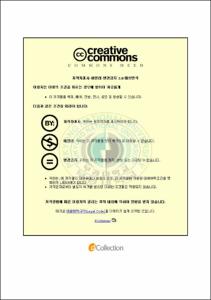유동층 상압 건조법에 의한 실리카 에어로겔 분말의 합성 및 최적화 연구
- Alternative Title
- Optimization of the synthesis of silica aerogel powders using the ambient pressure fluidized bed drying
- Abstract
- To overcome the problems in the large-scale and cost effective production of silica aerogel powders, the present research was carried out using a cheap precursor, such as water glass, through via fluidized bed drying instead of via furnace drying. The optimum conditions on dropping time of chemicals fed and spindle rotational speed in the synthesis of hydrogel were 10sec and 250~300rmp, respectively. Silica aerogel powders with low tapping density could be easily synthesized and bring about reduced drying time with dehydration process.
The effects of various fluidized bed drying parameters, such as bead/gel ratio, bead size, superficial gas velocity and bed temperature, on the physical properties and yield of aerogel powders have been investigated in terms of tapping density and yield of silica aerogel powders obtained.
The silica aerogel powders with tapping density of 0.08~0.09g/cm3 and yield as high as 90% have been synthesized by systematic optimizations of the fluidized bed drying parameters; bead/gel weight ratio of 3~5, bead size of 0.2mm, superficial gas velocity of 3.3×10-2Nm/s, and bed temperature of 200℃.
We anticipate that the optimization study will do much for solving the problems in the continuous production of silica aerogel powders.
- Issued Date
- 2008
- Awarded Date
- 2008. 8
- Type
- Dissertation
- Publisher
- 부경대학교 공과대학원
- Alternative Author(s)
- Park, Kyung Tae
- Affiliation
- 부경대학교 공과대학원
- Department
- 대학원 화학공학과
- Table Of Contents
- 제1장 서론 = 1
제2장 이론 = 3
제3장 실험장치 및 방법 = 7
3.1 실험장치 = 7
3.1.1 실리카 에어로겔 합성장치 = 7
3.1.2 유동층 건조장치 = 9
3.2 실험방법 = 11
3.2.1 원료 적가 시간의 영향 = 11
3.2.2 교반 속도의 영향 = 12
3.2.3 탈수의 영향 = 13
3.2.4 건조 방식의 영향 = 14
제4장 결과 및 고찰 = 15
4.1 원료 적가 시간의 영향 = 15
4.2 교반 속도의 영향 = 17
4.3 탈수의 영향 = 19
4.3.1 용매치환 및 탈수 전후의 습윤겔의 특성 변화 비교 = 19
4.3.2. 탈수 유무에 따른 건조 시간 비교 = 21
4.3.3. 탈수 유무에 따른 건조된 에어로겔 분말의 충진 밀도 비교 = 23
4.3.4. 탈수 유무에 따른 건조된 에어로겔 분말의 구조 비교 = 25
4.4 건조 방식의 영향 = 27
4.4.1 대류식 상압 건조 방식과 유동층 상압 건조 방식의 비교 = 27
4.4.2 비드/겔 무게비에 따른 충진 밀도의 비교 = 30
4.4.3 비드/겔 무게비에 따른 수율의 비교 = 32
4.4.4 비드 크기에 따른 충진 밀도의 비교 = 35
4.4.5 유입 공기의 유속 변화에 따른 충진 밀도의 비교 = 37
4.4.6 건조 온도의 변화에 따른 충진 밀도의 비교 = 39
4.4.7 건조 과정별 유리 비드 표면의 비교 및 재사용 = 41
제5장 결론 = 43
참고문헌 = 46
감사의 글 = 50
- Degree
- Master
- Files in This Item:
-
-
Download
 유동층 상압 건조법에 의한 실리카 에어로겔 분말의 합성 및 최적화 연구.pdf
기타 데이터 / 9.16 MB / Adobe PDF
유동층 상압 건조법에 의한 실리카 에어로겔 분말의 합성 및 최적화 연구.pdf
기타 데이터 / 9.16 MB / Adobe PDF
-
Items in Repository are protected by copyright, with all rights reserved, unless otherwise indicated.